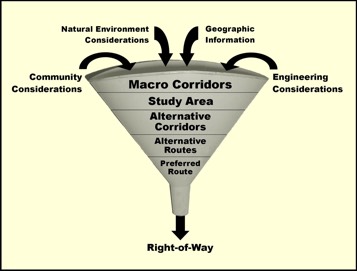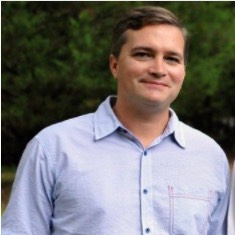Contact Us
Get Started
Try it now for free. Enter your information & an activation link will be sent to your email. Use the free version as long as you’d like or until you’re ready to upgrade.

Try it now for free. Enter your information & an activation link will be sent to your email. Use the free version as long as you’d like or until you’re ready to upgrade.

Team Choice is a web application which supports multi-criteria decision-making. It is most commonly used to site high voltage electric transmission lines. The process and techniques used in Team Choice are based on the Electric Power Research Institute(EPRI) & Georgia Transmission Corporation(GTC) Overhead Transmission Line Siting Methodology. This methodology was developed in 2004-2006 through a research project involving the following experts Gayle Houston, Christy Johnson, Christopher Smith, Jesse Glasgow, Dr. Steve French, Dr. Joseph Berry, Dr. Elizabeth Kramer, Dr. Paul Zwick, Steven Richardson and other contributors. EPRI published a report documenting the process and can be accessed at this link.
Team Choice developers have been involved with transmission siting projects since 1999. They started working with Georgia Transmission Corporation (GTC) to help them leverage geospatial technology to implement a more standardized, consistent, objective and defensible siting process. While impressed with the benefits of using computers to analyze geographic information for transmission siting, there was opportunity for improvement in this technology was integrated into the overall siting process. In 2003 the Electric Power Research Institute and GTC co-sponsored a research project to develop a standardized method for siting transmission lines based on the work we were doing at GTC.
EPRI is an international non-profit industry organization that provides thought leadership, industry expertise, and collaborative value to help the electricity sector identify issues, technology gaps, and broader needs that can be addressed through effective research and development programs for the benefit of society.
The research team was made up of four leading academics, an environmental attorney, a land rights attorney, several siting practitioners and technical experts and included input from industry and external stakeholders through a series of workshops. The developer of this site (Team Choice) was a technical team leader on the team that developed this methodology. This research project resulted in the EPRI-GTC Overhead Electric Transmission Line Siting Methodology which was described in a report published by EPRI in 2006. Since then this methodology has been widely used across a range of jurisdictions and has been calibrated for local applications.
The 2006 EPRI report documented the “state of the art” methodology at the time. Since that time the methodology has been applied in other jurisdictions within a variety of physical and social environments. Because of differences between physical and social environments, the methodology has also often been enhanced in those other jurisdictions. As with many standard processes, it has been refined over the years. The implementation of the methodology varies from one jurisdiction to the other. Common themes for projects that use the EPRI-GTC Methodology include:

The Methodology is analogous to a funnel in which we process information. Into the funnel goes geographic information which is calibrated with community concerns, natural concerns, and engineering considerations. Each phase of the process is like a filter in the funnel which is used to reduce the area of consideration. As the area of focus is reduced we can invest more effort into studying the area at a greater level of detail leveraging external engagement feedback and field studies. The bottom of the funnel results in a preferred route for the transmission line.
Team Choice is supported by siting experts who have worked on hundreds of projects across local, regional, and national jurisdictions with varying regulatory environments. Team Choice consultants help project teams adapt the siting methodology to meet their unique project requirements. These team members are available to assist you with your project.

Jesse has worked on hundreds of transmission line siting projects in two provinces, eight states and 3 countries since 1998. He was a team leader in the development of the EPRI-GTC Transmission Line Siting Methodology and has the most experience implementing the methodology in jurisdictions across North America. Accountable for the successful implementation of projects at Team Spatial, Jesse works with clients to understand their project challenges. He develops and implements solutions including workshop facilitation, project implementation and expert testimony. Jesse earned a BS in Professional Geography, GIS Certificate, GIS Professional Certification, Project Management Professional Certification.

Nicholas has been supporting Transmission Line Siting projects since 2011. His experience includes gathering stakeholder input, GIS suitability analysis, corridor generation, alternate route evaluation, data acquisition, and siting report development. Nicholas has a bachelor of Arts in Geography from Georgia Southern University with a focus in Geographic Information Science. He has worked in projects ranging from small government to multi-national transmission line siting projects.